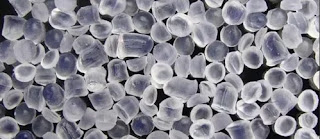What is Reinforced Polypropylene ? [History, Uses, Types, Health Hazards]
An Overview of Reinforced Polypropylene, lets start with just Polypropylene.
Polypropylene, often just called "polypropylene" or "PP" for short, is a type of plastic. It's a material that's made from tiny molecules linked together, and it's used in all kinds of things you might find around you.
What makes polypropylene special is that it's lightweight, tough, and resistant to many chemicals. It's used in making things like plastic containers, packaging, toys, medical equipment, and even some clothing. So, in simple terms, polypropylene is a versatile plastic that's handy for a wide range of everyday items.
Reinforced Polypropylene:
Reinforced polypropylene is a type of plastic material that has been made stronger and more durable by adding certain reinforcing agents. These agents are typically fibers or particles made of materials like glass, carbon, or metal.
Think of it like adding little bits of something strong to the plastic to make it tougher. This strengthened polypropylene can be used in various applications, such as making car parts, containers, or other products that need to be more robust and resistant to wear and tear.
Uses
Reinforced polypropylene is used in a variety of applications where a combination of strength, durability, and chemical resistance is required. Some common uses include:
- Automotive Parts: Reinforced polypropylene is used to make various automotive components like bumpers, interior panels, and under-the-hood parts because it can withstand harsh environmental conditions and impacts.
- Consumer Products: It's used in consumer goods like luggage, containers, and appliances because it's durable, lightweight, and can be molded into different shapes.
- Construction: It can be found in construction materials such as pipes, fittings, and roofing membranes due to its resistance to chemicals and the ability to withstand outdoor conditions.
- Industrial Applications: Reinforced polypropylene is used for making tanks, pipes, and equipment in the chemical industry due to its resistance to corrosive chemicals.
- Sporting Goods: Some sporting equipment, like kayaks and canoes, utilize reinforced polypropylene for its lightweight and durable properties.
- Packaging: It's used in packaging materials and containers because it's strong and resistant to moisture and chemicals.
- Furniture: Some furniture manufacturers use reinforced polypropylene to make chairs and tables because it's durable, weather-resistant, and lightweight.
- Medical Devices: In some medical equipment and devices where a strong and chemically resistant material is needed.
The choice to use reinforced polypropylene in these applications is typically driven by the need for a material that is both cost-effective and offers a good balance between strength, durability, and resistance to environmental factors or chemicals.
You may also like to read: What is thermoelectric cooling technology, how does it works ?
Potential Health Hazards
Reinforced polypropylene itself is generally considered safe and not associated with significant health hazards. Polypropylene is a common plastic material that is widely used in various applications, and it is considered to be non-toxic and chemically stable. However, there are a few points to consider:- Inhalation of Dust: When working with reinforced polypropylene in its powder or dust form, inhaling these particles can be harmful to the respiratory system. This is a concern in industrial settings where polypropylene is processed or manufactured. Prolonged exposure to such dust may irritate the respiratory tract and potentially lead to respiratory problems.
- Combustion: When polypropylene is burned, it can release toxic gases, such as carbon monoxide and carbon dioxide. Therefore, it's important to avoid open flames around polypropylene and not incinerate it.
- Additives and Reinforcements: While polypropylene itself is considered safe, the health hazards can be associated with the additives and reinforcements used in some formulations. For example, if the reinforcement material, such as glass fibers, is not properly encapsulated within the polymer matrix, there could be potential risks of exposure to these materials, especially if the product degrades or breaks down over time. Additionally, certain additives like flame retardants or plasticizers can pose health concerns.
In general, the health hazards associated with reinforced polypropylene are more related to the processing and disposal of the material, rather than the material itself. Proper safety measures should be taken when working with polypropylene in industrial settings to minimize exposure to dust or fumes. Additionally, it's essential to follow disposal guidelines to ensure that polypropylene waste is managed safely and does not harm the environment.
You may also like to read: 500 Easy ways you can reduce your carbon foot print to save the planet
History
Reinforced polypropylene is a composite material made by adding reinforcing agents, such as fibers or particles, to polypropylene, a type of plastic. The history of this material is closely tied to the development of polypropylene itself and the innovation of adding reinforcements to enhance its properties.
Here's a brief overview of the history:
- Polypropylene Invention (1954): Polypropylene, the base polymer for reinforced polypropylene, was first discovered and synthesized by two Italian scientists, Giulio Natta and Karl Ziegler, in 1954. They received the Nobel Prize in Chemistry in 1963 for their work on polymerization processes. Polypropylene is known for its high melting point, chemical resistance, and versatility.
- Development of Reinforced Polypropylene (mid-20th century): The idea of reinforcing polypropylene with materials like glass fibers or minerals to improve its mechanical properties and durability likely emerged not long after the invention of polypropylene. The addition of reinforcements allowed manufacturers to create a stronger and more versatile material for various applications.
- Automotive Industry (1960s): Reinforced polypropylene gained prominence in the automotive industry during the 1960s. It was used to make parts like bumpers, dashboards, and interior components. The automotive sector's demand for lightweight, durable, and cost-effective materials drove the development and adoption of reinforced polypropylene.
- Advancements and Wider Applications (1970s-1980s): Over the following decades, the use of reinforced polypropylene expanded into other industries such as construction, packaging, consumer goods, and more. Innovations in processing techniques and the introduction of various reinforcement materials led to a wider range of applications.
The development and adoption of reinforced polypropylene were driven by the desire to create materials that were not only strong and durable but also lightweight and cost-effective. This material provided an alternative to traditional materials like metal, offering benefits such as corrosion resistance and design flexibility. Today, reinforced polypropylene continues to be an important material in various industries, offering a combination of strength, chemical resistance, and versatility.
You may like to know: What is DIN EN 274 Standard, its purpose, uses ?
Types of Reinforced Polypropylene
Glass Reinforced Polypropylene:
Glass reinforced polypropylene is a type of plastic material that's made stronger and sturdier by adding tiny pieces of glass fibers into it. Just like how adding steel bars to concrete makes it tougher, adding these glass fibers to polypropylene makes it more durable and able to withstand things like impacts and bending without breaking easily.
This strengthened glass-reinforced polypropylene is used in various products where extra strength and durability are needed, like car parts, containers, and even some furniture. It's like giving regular plastic a boost to make it tougher and more reliable.
Carbon Fiber Reinforced Polypropylene:
Carbon fiber reinforced polypropylene is a special kind of plastic that's made extra strong by mixing in tiny pieces of carbon fibers. Think of these fibers like very thin and lightweight threads made of carbon.
By adding these carbon fibers to polypropylene, the plastic becomes much tougher and able to handle heavy loads without breaking easily. It's like giving regular plastic a superhero suit to make it incredibly strong. This reinforced material is used in various applications where lightweight strength is crucial, such as in sports equipment, aerospace, and even automotive parts.
Talc Reinforced Polypropylene:
Mica-Filled Polypropylene:
20 glass filled polypropylene VS 40 glass filled polypropylene:
TAGS Information



No comments:
Post a Comment